Coffee Bean Lists
-
Yunnan BM species (Blue Mountain species) coffee beans
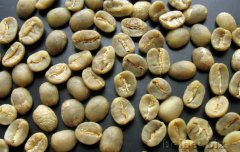
The top Yunnan coffee variety, growing at 1500~2000 meters, is BM coffee (bm, the most customary explanation should be Blue Mountain coffee introduced from Jamaica), planted in Simao and Baoshan areas of Yunnan Province. After excellent processing, bean shape neat and uniform, washed silver skin treatment is very clean, defective bean content is very small, texture is relatively hard. Baked Yunnan Blue Mountain, bite up
2015-07-01 Yunnan Blue Mountain Coffee Green Bean Top Variety Longer 150 -
Yunnan small grain coffee round bean Peaberry
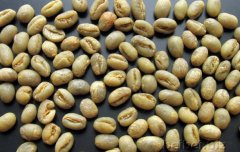
Coffee cherry fruit generally has two flat seeds, if one does not grow properly, only one bean seed sprouts, in a fruit there is only a small round bean (deformed), with a small crack in the middle, it is called pea-shaped coffee bean (peaberry). Round beans (Peaberry) are also known as perle, Perla and caracol. A normal Arabica.
2015-07-01 Yunnan small grain coffee round bean Peaberry cherry fruit -
Cuba Marago Rippi Coffee Elephant Bean Elephant Bean
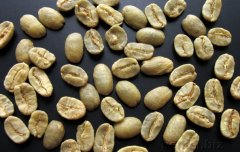
Elephant bean, giant coffee bean (Elephant bean), which is 3 or more times larger than other coffee beans, has a taxonomic name Maragogype, derived from Maragogype County in the state of Bahia, Brazil, where the taxonomic status of Giant Coffee Bean was first established in 1870 as an Arabica derived species (hybrid). Cuba
2015-07-01 Cuba Mara Gori coffee elephant beans Elephant Bean elephant -
Ethiopia (Ethiopia) mocha coffee raw beans
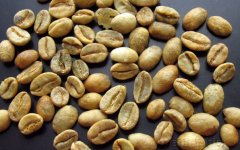
Arabian coffee is the hometown of Arabian coffee, which grows at high latitudes and needs a lot of manual care. Here is the famous Ethiopian mocha, which has a sour taste similar to that of wine, fragrant and productive. Ethiopia also sells coffee through the port of Mocha in neighboring Yemen across the Red Sea, so Ethiopian sun-treated coffee is often called Mo.
2015-07-01 Ethiopia Yesso Biya Mocha Coffee Raw Bean Arabian hometown -
Tanzania PB coffee raw beans / Peaberry beans
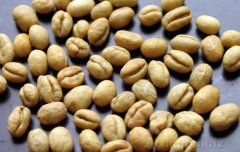
Most of the Tanzanian beans are grown in Mr. Kilimanjaro and Mt, near the northern Kenyan border. The Meru area, often called "Clemangaro", is occasionally named after the distribution center Moshi or Arusha. In addition, on the south side of the border, a little washed Arabica beans are produced to the nearby big city of Baya (
2015-07-01 Tanzania coffee raw beans Peaberry round beans -
Raw bean Indonesia Java Robusta in Robusta, Java, Indonesia
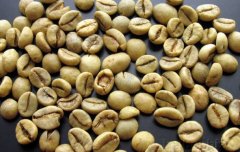
In the early 1970s, Java cut down Arabica trees introduced by most Dutch and planted Robbosa beans instead. Since then, Java coffee has become greasy, plain and has a strong smell of wheat and tea. Among the few remaining Arabica estates, Djampit is the most famous. These beans are similar to other Indonesian beans, but with obvious sour taste and no texture.
2015-07-01 Indonesia Java Robbs Booth Shengdou -
Kenya Coffee Raw Bean Kenya AA green bean
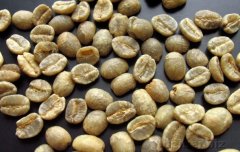
Coffee entered Kenya in the 19th century, when Ethiopian coffee drinks were imported into Kenya through southern Yemen. But it was not until the early 20th century that the bourbon was introduced by the St. Austin Mission. Kenyan coffee is mostly grown at an altitude of 1500 to 2100 meters and is harvested twice a year. To ensure that only ripe berries are picked, people must be in the forest
2015-07-01 Kenya coffee raw beans green bean -
Colombian SUPREMO grade coffee raw beans

Colombian coffee is one of the few original coffee sold in the world under the name of the country. In terms of quality, it has won praise unmatched by other coffee. The country is the world's largest exporter of Arabica coffee beans, while robusta coffee is rarely grown. It is also the world's largest exporter of washed coffee beans (Washed beans). Compared with other producing countries, Colombia is more
2015-07-01 Colombia SUPREMO coffee raw beans a few -
Brazil Santos Coffee Raw Bean Brazil Santos Coffee
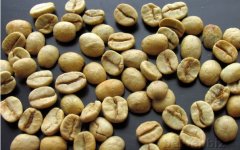
Although Brazil produces 30 to 35% of the world's coffee annually, ranking first in the world, none of the Brazilian beans can be called the top coffee. The mountains are covered with coffee trees in southern Brazil, but Santos is the only one that can be put on the table; most of the other hastily processed beans are used to make instant coffee and easy-to-open coffee. Growth of Santos coffee
2015-07-01 Nishiyama toast coffee raw beans Brazil Santos Coff -
Indonesia aged Mantenin raw bean Aged Mandheling green bean
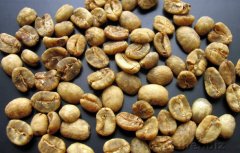
Indonesia's Sumatra Islands produces coffee, which is rich in coffee because of its unique geographical location, climatic environment, longitude and latitude. Indonesian coffee has a high mellowness, weak sour taste and strong aroma. The more famous area is Lin Dong area. Mantenin is also the representative of Indonesian coffee. It is worth mentioning that some coffee lovers like the so-called Mamba coffee, that is, Mantenin and Brazilian coffee.
2015-07-01 Indonesia aged Mante raw beans Aged Mandheling gr -
Hawaiian Kona Coffee Raw Bean Extra fancy kona
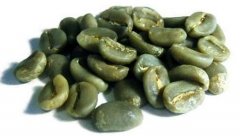
A coffee producing area considered to be one of the best in the world must cover six important factors: soil quality, altitude, sunshine, cloudiness, rainfall and slope. Hawaii is blessed with these six elements to produce the best and most respected coffee in the world. Soil: fertile tropical Hawaiian volcanic soil that provides the dense nutrients of the Kona Coffee Tree. Sea
2015-07-01 Hawaii Kona coffee raw beans Extra fancy kona -
Yunnan small grain coffee Bourbon Bobang AA raw beans
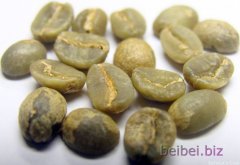
The western and southern parts of Yunnan Province are located between 15 N and the Tropic of Cancer, most of which are 1000-2000 meters above sea level. The topography is dominated by mountains and slopes, with large ups and downs, fertile soil, sufficient sunshine, rich rainfall and large temperature difference between day and night. These unique natural conditions form the special taste of Yunnan small-grain coffee, which is strong but not bitter, fragrant but not strong, slightly fruity.
2015-07-01 Yunnan Xiaogui coffee Bourbon Bobang raw beans Yunnan province western China -
Jamaica Blue Mountain Garden Beans Mavis bank Peaberry
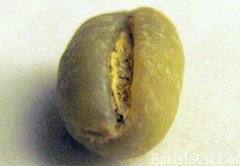
Only about two percent of Blue Mountain coffee is produced in Peaberry, and buying this coffee depends on time and luck... Take care of your own coffee, and I can't find more words to describe it. I only think of two words: perfect. Peaberry taste, in bitter and astringent aspects have been strengthened, the general blue mountain that a little bit frivolous in the surface of the acid, but also from immersion down the whole
2015-07-01 Jamaica Blue Mountain Garden Bean Mavis bank Peaberry -
Raw beans of Jamaica Blue Mountain Mavis bank Grade 1
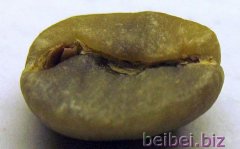
The unique flavor of Blue Mountain Coffee is related to its geographical location and climatic conditions. Generally speaking, south of the Tropic of Cancer and north of the Tropic of Cancer, this area is suitable for growing coffee, called the coffee belt. Jamaica is just south of the Tropic of Cancer. The blue mountain is steep, the air is fresh, there is no pollution, it rains all the year round, and there is a great temperature difference between day and night, which has a unique and fertile new volcanic soil.
2015-07-01 Jamaica Blue Mountain Mavis bank Grade Raw Bean -
Types of coffee basic knowledge of high-quality coffee beans
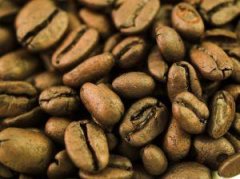
Yunnan coffee in China is a product of the tropics. You may not believe that the best coffee producing area in the world is in Yunnan, China.
2015-07-01 Coffee variety boutique coffee beans basics common sense -
Flavor characteristics of coffee from producing area description of coffee bean flavor

After coffee beans spread to all parts of the world, due to the different climate, soil quality, planting methods and processing methods, the taste of coffee beans can be said to be completely different. Here is a list of the basic flavor characteristics of Arabica coffee beans from different producing areas (it should be noted that the flavor of coffee produced by different producing areas and different farms in the same place will be different. Some people usually think that coffee
2015-07-01 Origin coffee flavor characteristics coffee beans description spread around the world -
Freshness is the life of coffee, how to determine the freshness of coffee beans?

Freshness is the life of coffee, how to determine the freshness of coffee beans? There are three steps: smell, see, and peel. Smell: put the coffee beans close to the nose and smell them deeply to see if you can clearly smell the aroma of the coffee beans. If so, the coffee beans are fresh enough. On the contrary, if the aroma is weak, or the greasy smell has begun to appear, the coffee beans are completely stale.
2015-07-01 Freshness coffee life how to judge coffee beans freshness -
Fresh coffee bean cross section coffee bean diagram
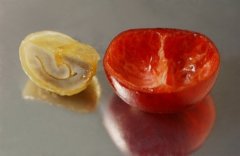
Cross section of fresh coffee beans
2015-07-01 Fresh coffee beans cross section diagram fresh coffee beans -
Coffee trees grow around the equator.
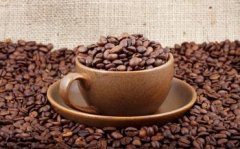
Coffee trees grow in tropical or subtropical agricultural gardens centered around the equator and called coffee belts. Most of the coffee production is between the Tropic of Cancer, 25 degrees north of the tropical or subtropical equator and 30 degrees south of the equator. An area with an annual average temperature of 16-25 degrees Celsius, no Frosts Descent and rainfall of 1600-2000 mm. At present, coffee is mainly produced by seven countries.
2015-07-01 Coffee tree grow equator center coffee for the middle -
Advantages and disadvantages of different number of coffee cups

There seems to be a constant debate about whether coffee brings more health benefits or more harm. How much coffee should you drink every day? benefits of one cup of coffee: Greek researchers studied 485 people over the age of 65 and found that one cup of coffee a day can keep arteries healthy and stabilize blood pressure. A survey of 600 volunteers by the University of Bristow in the UK also shows that one cup of coffee a day can enhance
2015-06-25 Different coffee cup good bad coffee health bring or harm.
